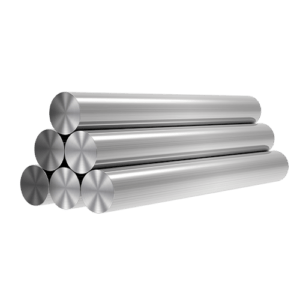Welcome to My Blog!
Before we dive into the content, I’d love for you to join me on my social media platforms where I share more insights, engage with the community, and post updates. Here’s how you can connect with me:
Facebook:https://www.facebook.com/profile.php?id=100090063158454
Now, let’s get started on our journey together. I hope you find the content here insightful, engaging, and valuable.
Introduction

Stainless steel 410 is a martensitic stainless steel known for its strength, hardness, and corrosion resistance. It is a popular choice in various industries due to its unique properties and versatility. This blog will delve into the features, applications, and benefits of 410 stainless steel, providing a comprehensive understanding of its strength and durability.
What is Stainless Steel 410?
Stainless steel 410 is an alloy composed primarily of iron, with a minimum of 11.5% chromium, which provides its corrosion resistance. This grade is particularly known for its high strength and wear resistance. Unlike other stainless steels, it can be hardened through heat treatment, making it suitable for applications that require both durability and machinability.
Chemical Composition
The chemical composition of 410 stainless steel is critical in defining its properties. The following table outlines the primary components:
| Element | Percentage (%) |
|---|---|
| Iron (Fe) | Balance |
| Chromium (Cr) | 11.5 – 13.5 |
| Carbon (C) | 0.15 max |
| Manganese (Mn) | 1.00 max |
| Silicon (Si) | 1.00 max |
| Phosphorus (P) | 0.04 max |
| Sulfur (S) | 0.03 max |
Mechanical Properties of Stainless Steel 410
The mechanical properties of 410 stainless steel make it a preferred choice for many industrial applications. Understanding these properties is essential for engineers and designers when selecting materials for specific purposes.
Tensile Strength
Stainless steel 410 exhibits excellent tensile strength, which measures the resistance of a material to being pulled apart. The tensile strength for this grade typically ranges from 515 to 760 MPa (75,000 to 110,000 psi), making it suitable for applications that require significant load-bearing capabilities.
Hardness
One of the standout features of stainless steel 410 is its hardness. After appropriate heat treatment, it can achieve hardness levels up to 52 HRC. This characteristic is vital for tools and components that undergo significant wear and tear.
Yield Strength
The yield strength of 410 stainless steel ranges from 275 to 480 MPa (40,000 to 70,000 psi). This property indicates the material’s ability to deform under stress without permanent deformation, making it suitable for structural applications.
Corrosion Resistance
While 410 stainless steel offers decent corrosion resistance due to its chromium content, it is essential to note that it is not as resistant as austenitic grades like 304 or 316. Its performance in various environments can be influenced by several factors, including temperature, humidity, and the presence of corrosive agents.
Environmental Suitability
Stainless steel 410 performs well in mildly corrosive environments. It is commonly used in applications where exposure to moisture is limited. However, it is advisable to avoid prolonged exposure to saltwater or harsh chemicals.
Applications of Stainless Steel 410
The unique properties of 410 stainless steel make it suitable for various applications across multiple industries. Here are some common uses:
Automotive Industry
In the automotive sector, stainless steel 410 is utilized in components such as exhaust valves and other engine parts, where strength and heat resistance are critical.
Aerospace Industry
The aerospace industry employs 410 stainless steel for various structural components due to its high strength-to-weight ratio.
Food Processing
Stainless steel 410 is used in food processing equipment, such as knives and cutting tools, due to its corrosion resistance and ease of cleaning.
Oil and Gas
In the oil and gas industry, 410 stainless steel is used for valve components and piping systems, where durability is essential in harsh environments.
Advantages of Using Stainless Steel 410
Choosing 410 stainless steel comes with several advantages that can significantly impact performance and cost-efficiency.
Cost-Effectiveness
Stainless steel 410 is generally more affordable than higher-grade stainless steels, making it an economical choice for various applications without compromising on performance.
Ease of Machinability
This grade is easier to machine than many other stainless steels, allowing for more complex shapes and designs to be produced with precision.
Heat Treatable
The ability to undergo heat treatment enhances its mechanical properties, allowing users to tailor the material’s characteristics for specific applications.
Limitations of Stainless Steel 410

While 410 stainless steel has many benefits, it also has certain limitations that should be considered:
Corrosion Resistance Limitations
As mentioned earlier, stainless steel 410 does not perform as well in highly corrosive environments compared to other grades. Careful selection of applications is necessary.
Not Suitable for High-Temperature Applications
Although it can withstand high temperatures, 410 stainless steel may lose some strength and hardness when exposed to extreme heat for prolonged periods.
Conclusion
Stainless steel 410 is a robust and versatile material that offers excellent strength and durability. Its unique properties make it suitable for a wide range of applications across various industries. Understanding its mechanical properties, corrosion resistance, and appropriate applications is crucial for making informed decisions when selecting materials.
FAQ
What is the difference between stainless steel 410 and 304?
Stainless steel 410 is a martensitic stainless steel, whereas 304 is an austenitic stainless steel. 410 offers higher strength and hardness, while 304 provides better corrosion resistance.
Can 410 stainless steel be welded?
Yes, 410 stainless steel can be welded, but preheating and post-weld heat treatment are often recommended to reduce the risk of cracking.
Is stainless steel 410 magnetic?
Yes, stainless steel 410 is magnetic due to its martensitic structure, making it distinct from many other stainless steel grades.
How do you maintain 410 stainless steel?
Regular cleaning with mild detergents and avoiding harsh chemicals will help maintain the appearance and performance of 410 stainless steel.
Can stainless steel 410 be heat treated?
Yes, stainless steel 410 can be heat treated to improve its hardness and strength, which is one of its significant advantages.
